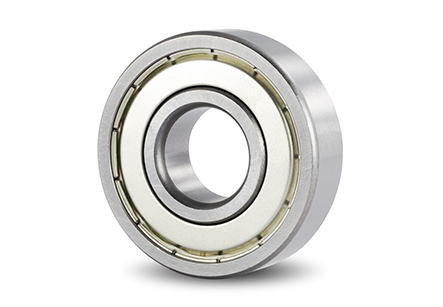Summary:
Working principle of universal joint bearing When the active fork is in the vertical position of the linear bearing,...
Working principle of universal joint bearing When the active fork is in the vertical position of the linear bearing, and the cross axis plane is perpendicular to the active axis. At this time, the linear velocity of the engagement point of the driving fork and the cross shaft and the engagement point of the driven fork and the cross shaft on the plane of the cross special bearing axis are equal. The velocity projection of the driven fork onto the cross axis plane. Because when using a non-independently suspended thrust roller bearing frame, condition one is difficult to meet.
The relative position of the transmission and main reducer changes from time to time, so the unequal speed can only be as small as possible. The unequal velocity of 10-character shaft universal joint. It means that the angular velocity of the driven shaft is uneven in a circle, and the driven shaft is fast and slow. If the driving shaft rotates at a constant angular speed, that is, the unequal speed of a single cross-shaft universal joint when there is an included angle. The angle between the two shaft angular contact ball bearings of one universal joint is equal to the angle between the two shafts of the second universal joint.
Double cross-shaft universal joint completes the conditions of constant speed transmission between the output shaft of the transmission between the two shafts and the input shaft of the drive axle. When the driving fork is in the horizontal position and the plane of the slewing plate bearing axis is perpendicular to the driven axis. The velocity projection of the active fork to the cross axis plane. The bearing driven fork of one universal joint is in the same plane as the driving fork of the second universal joint. The angular speed of the main and driven shafts is related to the bearing system. The greater the angle of intersection between the two shafts, the greater the speed, and the worse the unequal speed of the drive shaft.
Quasi-constant velocity universal joints and constant velocity universal thrust ball bearing joints. The common quasi-constant velocity universal joints have two types and three-pin shaft types. Their working principle is the same as that of double cross-shaft universal joints. The principle of transmission is the same. In practice, the double universal joint is a set of constant velocity transmission installations that reduce the length of the drive shaft to a small double ten-bearing shaft universal joint. The double fork is equivalent to the drive shaft and the universal joint with both ends on the same plane. To the knot fork.
When the intersection angle between the output shaft and the input shaft is small, the angular velocities of the two shafts can be made close to the same. The intersection of the two shaft axes on the arc is very close to the above-mentioned vertical line, so that the α spherical roller bearing 1 and The difference of α2 is very small, so the double universal joint is called the quasi-constant velocity universal joint. The defects of the constant velocity universal joint: pressure assembly, high unit pressure of steel ball and curved groove, inconvenient disassembly and assembly, and fast wear. As long as two steel balls transmit force, when reverse, the other two steel balls transmit force.


